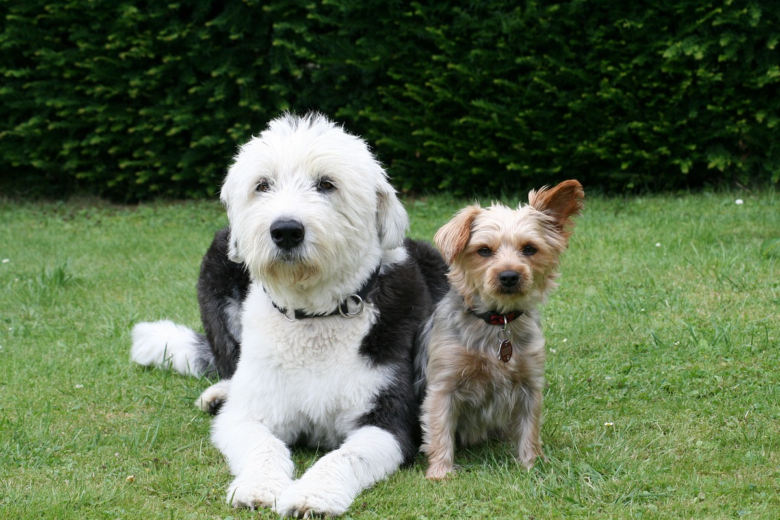Welcome to this comprehensive guide on dog training! Whether you’re a new dog owner or have had furry companions for years, treinamento canino is an important part of building a strong and positive relationship with your four-legged friend. In this article, we’ll discuss essential aspects of dog training and provide you with expert tips and techniques from professional dog trainers to help you become a master in treinamento canino.
Key Takeaways:
- Dog training is an essential part of building a strong and positive relationship with your pet.
- Professional dog trainers can help you effectively train your dog using proven techniques.
- Obedience training, crate and leash training, understanding dog behavior, and bonding with your pet are all important aspects of dog training.
- Consistency and patience are key to successfully training your dog.
- Bonding with your pet through play, communication, and positive interactions is essential for a healthy and happy relationship.
1. Understanding Dog Behavior
Dogs are truly amazing creatures, but sometimes their behavior can be puzzling. In order to begin the treinamento canino process, it’s important to first understand your dog’s behavior. This includes knowing how to train puppies and modify unwanted behaviors. You can start by following these expert tips and techniques for building a strong foundation with your furry friend:
1.1 Puppy Training Methods
When it comes to puppy training, consistency is key. Start with basic commands such as “sit”, “stay”, and “come”. Reward good behavior with treats and positive reinforcement to create a lasting bond with your pup.
1.2 Common Behavioral Issues
Many dogs struggle with common behavioral issues such as excessive barking, chewing, or jumping. Understanding the root cause of these behaviors can help you effectively modify them. Dogs often exhibit these behaviors out of boredom, lack of exercise, or a need for attention.
1.3 Modifying Unwanted Behaviors
The best way to modify unwanted behaviors is through positive reinforcement training. Punishing your dog can actually reinforce the behavior and make it worse. Instead, reward your dog for good behavior and redirect their attention when they exhibit unwanted behavior.
“Dogs do speak, but only to those who know how to listen.” -Orhan Pamuk
2. Obedience Training Techniques
If you want a well-trained and obedient dog, it’s essential to start with the basics of obedience training. Teaching your dog basic commands and good manners is the foundation of treinamento canino. In this section, we will explore effective techniques to help you train your furry companion to follow your commands and behave appropriately.
2.1 Positive Reinforcement Training
Positive reinforcement training is a widely accepted and effective method of obedience training for dogs. It is based on the principle of rewarding good behavior to encourage your dog to repeat it. Treats, toys, and praise are popular rewards in this type of training.
This technique not only builds a stronger bond between you and your dog but also makes the learning experience enjoyable for your furry companion. Positive reinforcement training has proven to be highly successful in teaching basic obedience commands such as sit, stay, and come.
2.2 Consistency is Key
Consistency is the key to successful obedience training. Always use the same commands and training techniques, so your dog gets used to it and learns to associate specific behaviors with specific commands. It’s also vital to use positive reinforcement consistently and only rely on punishment as a last resort. Remember, you are your dog’s leader, and your attitude will reflect on how your dog behaves. Stay calm, patient, and consistent.
2.3 Practice Makes Perfect
Repetition is fundamental in obedience training for dogs. You will need to repeat the same command over and over again until your dog learns it by heart. Start training in a quiet environment where your dog can focus, and avoid distractions.
Once your dog has learned a command, gradually increase the level of the challenge (e.g., training in a park with other dogs around or with loud noises). Practice each command about 10 to 15 minutes a day, and gradually increase the duration as your dog improves.
2.4 Professional Help
If you are experiencing difficulties during your training sessions, it’s always okay to seek professional help. Professional dog trainers can provide insights and techniques to overcome training challenges and create a tailored training program for you and your dog. Look for professional dog trainers who specialize in obedience training for dogs and use positive reinforcement techniques.
3. Crate and Leash Training
When it comes to dog training, crate and leash training are two of the most important skills to teach your furry friend. Crate training helps with house training and ensuring your dog has a safe and comfortable space to call their own. Leash training, on the other hand, allows you to take your dog for outdoor adventures and keeps them safe and under control while walking.
3.1 Introducing Your Dog to a Crate
Introducing your dog to a crate requires patience and persistence. Start by introducing the crate as a positive space, using treats and toys to coax your dog into the crate. Gradually increase the time your dog spends in the crate, making sure to never force them inside. Over time, your dog will learn to view the crate as their safe haven.
3.2 Leash Training Tips
Leash training involves teaching your dog to walk calmly beside you on a leash, without pulling or lunging. Start by using positive reinforcement techniques, rewarding good behavior with treats and praise. Teach your dog to pay attention to you and respond to your commands before walking on the leash. As your dog learns proper leash behavior, gradually increase the duration and distance of your walks.
Remember, crate and leash training require patience and consistency. With the right techniques and approach, your dog can master these essential skills and become a well-behaved companion.
4. Professional Dog Training Services
If you want to accelerate your dog’s training process, consider investing in professional dog training. A professional dog trainer is experienced in addressing various behavior types and can provide you with personalized training techniques based on your dog’s specific needs. Here are some of the benefits of enrolling your dog in professional training classes:
- Expert Guidance – A professional dog trainer can give you expert guidance on how to handle your dog’s behavior during treinamento canino. They can assess your dog’s personality and address specific concerns or behavioral issues you may be struggling with.
- Effective Training Techniques – Professional dog trainers are well-versed in effective training techniques and can help you teach your dog advanced commands and behaviors. They can provide you with step-by-step advice on how to train your dog and offer personalized training plans that address your pet’s particular needs and personality.
- Structured and Fun Classes – Dog training classes provide a structured and fun environment for dogs to learn. Professional training classes range from obedience training to agility training, giving you a range of options to choose from based on your dog’s interests and needs.
- Positive Reinforcement – Professional dog trainers make sure to use positive reinforcement techniques during training, which create a positive learning experience for your dog. Positive reinforcement motivates dogs to learn, and they respond better to training when good behavior is rewarded.
Look for a professional dog trainer near you who is certified and has experience in treinamento canino. Make sure to inquire about their credentials, training methods, and the types of classes they offer.
5. Bonding and Relationship Building
When it comes to dog training, bonding and relationship building are crucial for a successful training experience. Dogs are social creatures and thrive on positive interactions with their owners. By establishing a strong bond with your furry friend, you will both enjoy a more fulfilling and rewarding relationship.
5.1 Techniques for Bonding
There are several techniques you can use to strengthen your bond with your dog. One effective technique is through play, such as games of fetch or tug-of-war. This not only provides exercise but creates positive, fun interactions with your dog.
Clear communication is another essential element of bonding with your dog. Use consistent dog commands and praise good behavior. Additionally, make sure to establish a nurturing environment with good dog care and training, providing your furry friend with proper nutrition, grooming, exercise, and mental stimulation. This will create a happy and healthy environment for your dog to thrive in.
5.2 Communication and Understanding
Dogs rely heavily on nonverbal communication. Pay attention to your dog’s body language to better understand their needs. As you progress through treinamento canino, it’s essential to be patient and persistent in communicating with your dog. Don’t get frustrated or give up if your dog doesn’t understand a command immediately. The key is to use positive reinforcement techniques and break down the training into small achievable steps.
6. Unlock Your Dog’s Potential with Proven and Effective Dog Training Techniques
Training your canine friend is a fun and rewarding experience that requires dedication and patience. By implementing the treinamento canino tips and techniques shared in this guide, you’ll be able to unlock your dog’s potential and develop a stronger bond with them.
Remember, consistency is key in effective dog training. Consistently using the training methods and commands outlined in this article will help your dog learn and develop good behavior habits.
Don’t hesitate to seek professional assistance if you’re feeling stuck or can’t seem to get the desired results. A qualified professional dog trainer can provide additional tips and guidance to help you and your furry friend succeed.
In conclusion, treinamento canino is a journey that requires patience, consistency, and a deep understanding of your dog’s needs. With proven dog training techniques and a little bit of effort, you can create a well-trained and obedient companion that will bring joy to your life for years to come.
FAQ
How can I become a professional dog trainer?
To become a professional dog trainer, it’s recommended to gain knowledge and hands-on experience in dog behavior and training techniques. You can start by taking courses or obtaining certifications from reputable dog training organizations. Additionally, gaining practical experience by volunteering at local animal shelters or assisting a professional dog trainer can help you develop the necessary skills to excel in this field.
What is positive reinforcement training?
Positive reinforcement training is a technique that focuses on rewarding desired behaviors rather than punishing unwanted ones. By using rewards such as treats, praise, or play, you encourage your dog to repeat behaviors that you find desirable. This method helps reinforce the bond between you and your dog, making the training experience enjoyable and effective.
Can all dogs be trained, regardless of age?
Yes, dogs of all ages can benefit from training. While puppies are generally more receptive to learning, adult dogs and even senior dogs can be trained and learn new behaviors. The key is to be patient, use positive reinforcement, and adjust your training methods to suit your dog’s age and abilities.
How long does it take to train a dog?
The duration of dog training can vary depending on factors such as the dog’s breed, age, and temperament, as well as the specific behaviors you’re working on. Basic obedience training can take several weeks to a few months, while more advanced training or behavior modification may require additional time. Consistency, practice, and patience are essential throughout the training process.
Should I crate train my dog?
Crate training can be beneficial for both you and your dog. A crate provides a safe and comfortable space for your dog and can aid in house training by preventing accidents when you can’t directly supervise your dog. When introduced properly and used appropriately, a crate can become a place of security and relaxation for your dog.
How can I leash train my dog effectively?
Leash training your dog requires consistent guidance and positive reinforcement. Start by teaching your dog to associate the leash and collar or harness with positive experiences, such as treats or playtime. Begin with short walks in low-distraction environments and gradually increase the duration and complexity of your walks. Reward your dog for walking calmly by your side and address any pulling or lunging behavior with redirecting techniques.
Where can I find professional dog training services near me?
To find professional dog training services in your area, consider asking for recommendations from your veterinarian, local pet stores, or fellow dog owners. Online directories and reviews can also provide valuable information on qualified dog trainers. It’s important to research and choose a trainer who uses positive, effective training methods and has experience working with dogs similar to yours.




